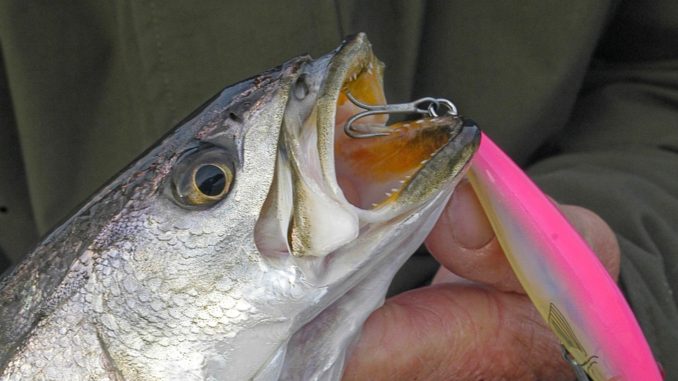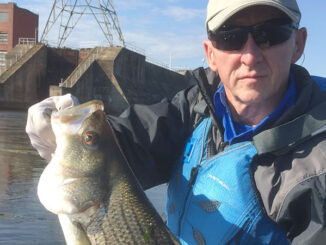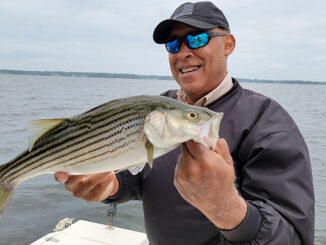
Many people believe striped bass, classified as an anadromous species (living in fresh and salt water) spend just a short time — the March-April mating season — in fresh water, then return to the high-salinity ocean and estuaries after their reproductive cycle ends.
But anglers who live near and fish in Albemarle Sound and the Roanoke River, in addition to fishermen of the Neuse/Tar drainages, know some “rockfish” never leave the brackish-to-fresh water of those systems.
And they know they don’t have to wait until April to catch stripers.
“You certainly have the opportunity (in February and March) to catch stripers (from the Neuse River) near New Bern,” said Gary Dubiel, an Oriental-based fishing guide (Speck Fever Guide Service, 252-249-1520 or 252-514-3484).
Actually, by “near New Bern,” Dubiel meant upstream about 2 miles. At New Bern the river is hundreds of yards wide where the Trent River’s mouth merges with the Neuse. Several highway bridges crisscross and span that section. But to the northwest, the Neuse narrows and resembles the striper-rich Roanoke River.
“It’s a beautiful, typical coastal river with cypress-tree lined banks and a lot of current,” Dubiel said.
Even during cold weather, anglers can catch stripers at the upstream Neuse.
“There’s usually two short feeding times, two hours just after sunrise and two hours before sunset,” Dubiel said. “You get up at 0-dark-thirty and get on the river at dawn, fish a couple hours, then, if the water’s warmed up, you might catch some speckled trout in the same area.”
“For stripers you fish a little deeper water with leadhead jigs and soft-plastic bodies, swim baits such as the 3-inch Storm series — anything that looks like a 3-inch shad.”
Striped bass will be in 15 to 25 feet of water, he said. “Fish ledges, dropoffs and bridge pilings.”
For specks, he uses 8-pound-test line spooled to spinning reels and rods; for stripers, he bumps up the line to 10- to 12-pound test and may change to bait-casters.
MirrOlures and Gulp or DOA soft-plastic lures threaded onto jigheads catch specks.
“I don’t like braided line,” Dubiel said. “I stick with a quality monofilament that doesn’t spoil in the cold but is a little more sensitive (to bites).”
The key to getting strikes by specks and stripers is “to fish really slow,” Dubiel said. “(The fish) are kind of lethargic, so you don’t want to ‘burn’ (fast retrieve) baits.”




